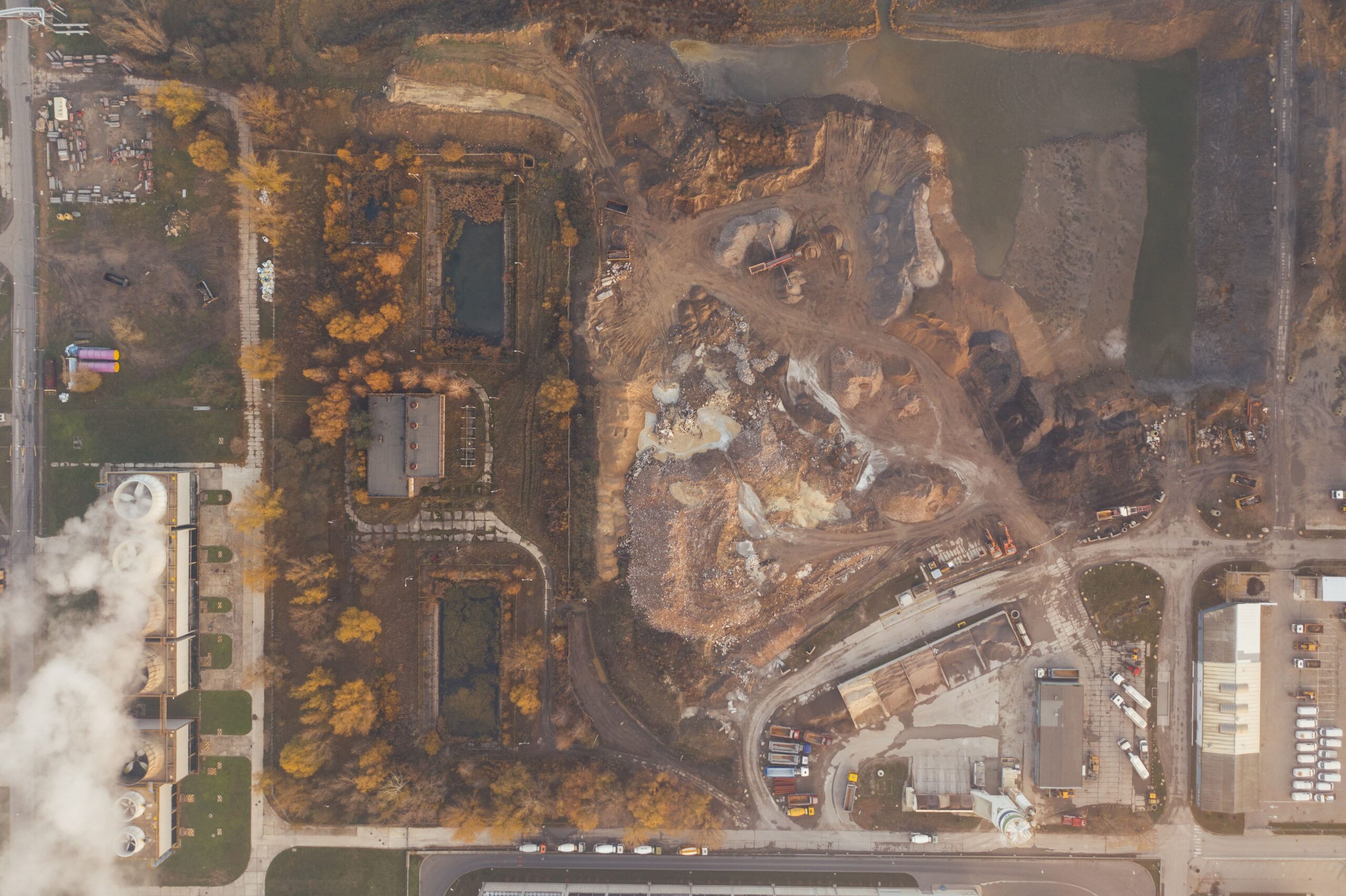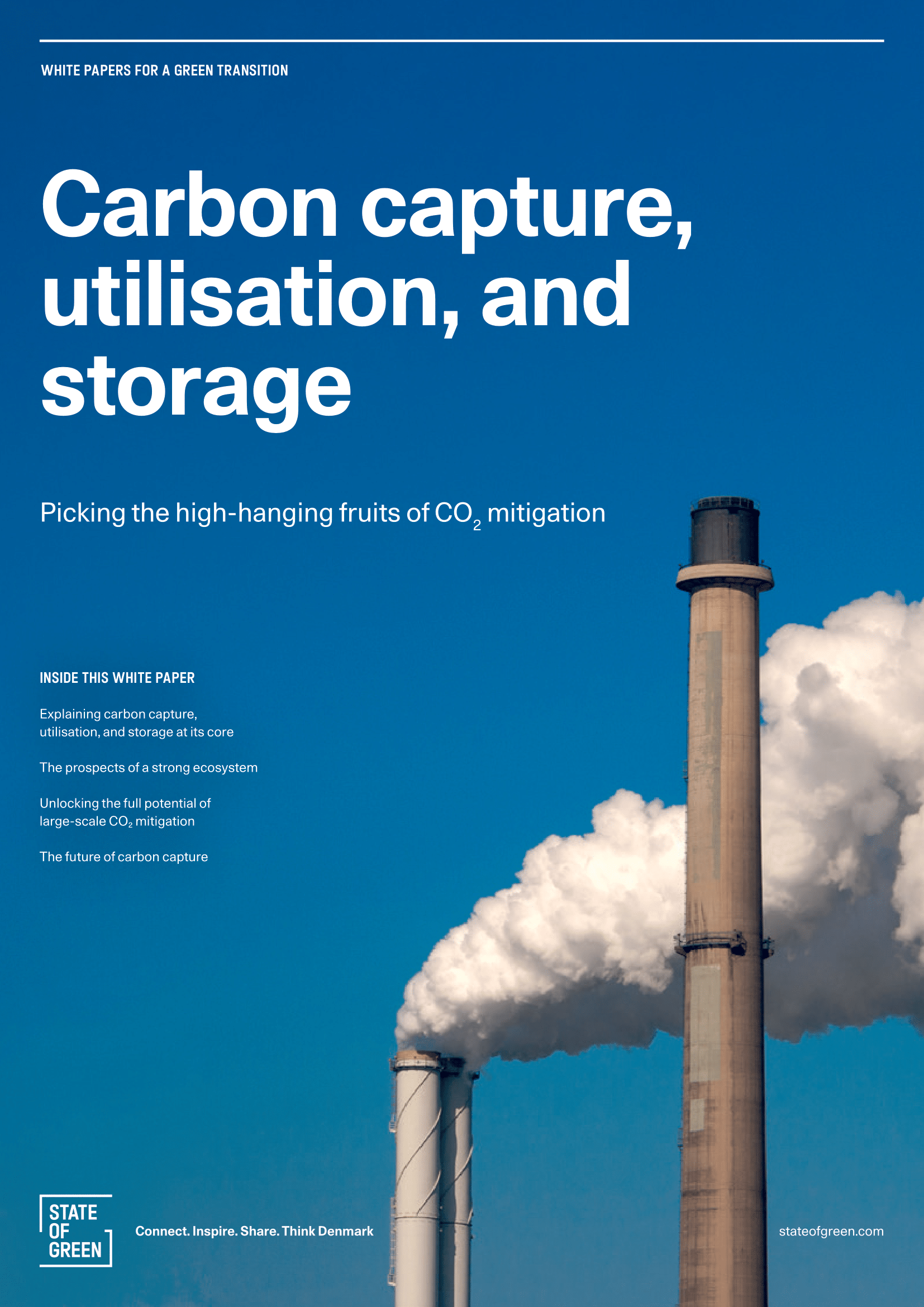White Paper: Carbon capture, utilisation, and storage
This article is part of the publication “Carbon capture, utilisation, and storage.
The content was produced in close collaboration with DI – Dansk Industri.
Download the publicationPerspective
Carbon capture, storage and utilisation



This article is part of the publication “Carbon capture, utilisation, and storage.
The content was produced in close collaboration with DI – Dansk Industri.
Download the publicationThe ambitious and dedicated CCS roadmap developed by the Danish Ministry for Climate and Energy includes significant public funding and support as a cornerstone in Denmark’s green transition.
Denmark has a strong history of public support for energy solutions turning climate ambitions into sustainable industries as previously proven in the Danish wind industry. This extensive experience can and should serve as a lever for realising the Danish CO₂ storage potential.
Furthermore, Denmark is geographically well placed in Northern Europe with a central location in the North Sea and holding shallow waters, enabling cost of efficiency and sector integration. On top of that, the efforts to drive down CO₂ emissions are likely to remove or transform the 14,000 Danish jobs that are currently employed in the oil and gas sector. This underlines the importance of the ensuring a green AND just transition. Estimates show that a targeted investment in CCS could create and maintain around 3,200 new Danish jobs – jobs that require many of the same skills as in the oil and gas sector.
Overall, Denmark is expected to be able to store CO₂ both offshore, nearshore and onshore. The Geological Survey of Denmark and Greenland (GEUS) has been commissioned to undertake geological and seismic investigations of possible storage sites in the Danish underground. Hereafter, the Danish Energy Agency will make strategic environmental consequence reviews of the sites. A selection of the sites is expected to be opened in 2024 for a tender of rights for interested parties to undertake more detailed, in-depth investigations of storage possibilities. CO₂ storage may begin in these sites from 2027 or 2028.
CO₂ storage is done by pumping CO₂ into the underground under high pressure up to 2 or 3 km below surface. The pressure needed is higher the deeper the CO₂ is stored. Several Danish companies have the competences and experience to be part of the value chain as operators, sub-suppliers or technical advisors.
Denmark has both infrastructure and competencies available for CO₂ and hydrogen transportation. Very large wind power ressources are available, enabling renewables integration in the work processes.
Adding to that, agreements on CO₂ import and export are being negotiated and finalised as per the end of 2022, providing flexibility and scale and supporting an innovative and cost-efficient CCS value chain.
events
Carbon capture, storage and utilisation
+4
News
Carbon capture, storage and utilisation
+2
News
Carbon capture, storage and utilisation